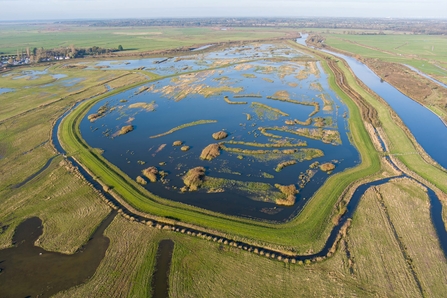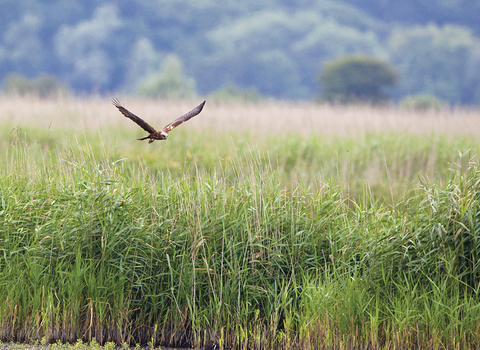Bigger and better-connected wildlife rich areas are essential to achieving the aims of the Nature Recovery Network. A great example of this is Carlton Marshes.
Thanks to the National Lottery Heritage Fund's investment of over £4 million in Suffolk Wildlife Trust’s vision for 405 hectares (1000 acres) of wildness, the transformation of Carlton Marshes into the southern gateway to the Broads National Park is complete. As water flows back onto the land, nature is taking over once again.
Carlton Marshes lie in the Waveney Valley at the southern tip of the Norfolk Broads, and the area is part of the Suffolk Broads. It comprises a jigsaw of grazing marsh, fens, peat pools, short fen meadow, tall fen (called 'tall litter fen'), dykes, pools and scrub. Mostly man-made, these habitats have developed over hundreds of years of traditional management and now host specialised wildlife.
This reserve is the Broads in miniature. Flower studded marshes drained by a system of dykes and grazed by cattle in summer, creates a paradise for marsh land birds and birds of prey including Hobby and Marsh Harrier. In early summer there is a fabulous display of Southern Marsh Orchid, Marsh Marigold and Ragged-Robin, together with the scarcer Bogbean, Bog Pimpernel and Marsh Cinquefoil. Water vole may also be seen in and around the dykes along with rare plants including Water Soldier and Frogbit. These habitats are ideal for the rare Fen Raft Spider which was successfully reintroduced to the reserve in 2012. Carlton and Oulton Marshes are also one of the best places in the UK for a range of freshwater snails, which reflects the good water quality in the dykes.

John Lord

